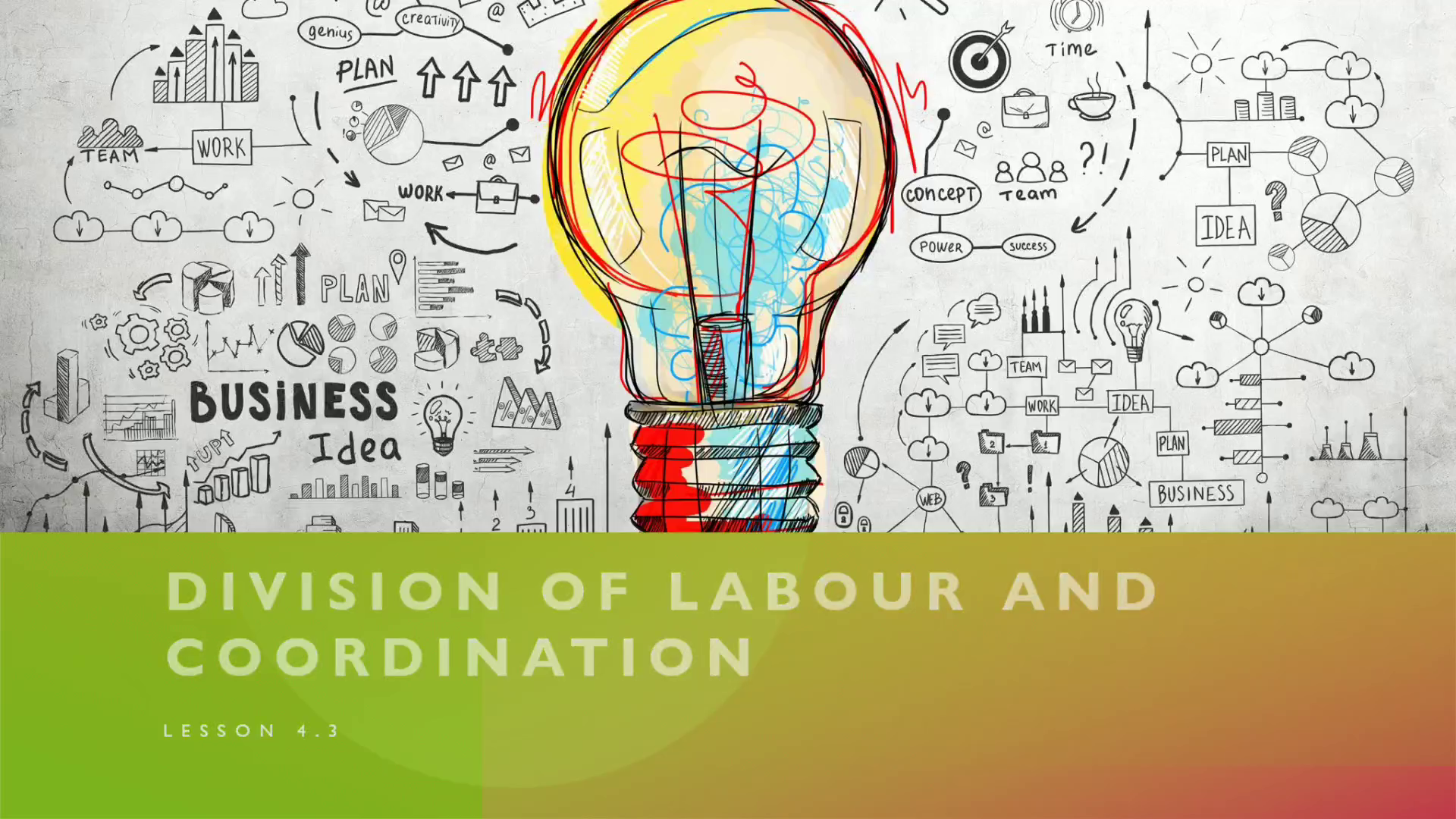
Lesson 4.3: Division of Labour and Coordination
Scene 1 (0s)
[Audio] Welcome to Lesson 4.3: Division of labour and coordination. Division of labor and coordination are key components of organizational structure and design. In this lesson, we will explore the concepts of division of labor and coordination, their importance in organizational success, and how they relate to each other..
Scene 2 (23s)
[Audio] Division of Labor a. Definition: Division of labor refers to the process of breaking down a complex task into smaller, more specialized tasks, and assigning them to different individuals or departments. b. Advantages: Division of labor can lead to increased efficiency, as individuals become more skilled in performing specific tasks, and can complete them more quickly. It can also lead to greater quality and consistency, as individuals become experts in their area of specialization. c. Disadvantages: Division of labor can lead to a lack of variety and creativity in work, as individuals may become bored or disengaged in performing repetitive tasks. It can also lead to a lack of understanding of the bigger picture, as individuals may only be focused on their specific tasks and not the overall goals of the organization..
Scene 3 (1m 27s)
[Audio] Coordination a. Definition: Coordination refers to the process of managing the interdependence of tasks and activities within an organization, to ensure that they are aligned and working towards the same goals. b. Advantages: Coordination can lead to greater efficiency and effectiveness, as tasks and activities are aligned and working towards the same goals. It can also lead to greater collaboration and communication between individuals and departments. c. Disadvantages: Coordination can be time-consuming and require significant effort to ensure that everyone is working towards the same goals. It can also lead to a lack of autonomy and creativity, as individuals may be required to conform to a specific plan or process..
Scene 4 (2m 23s)
[Audio] Division of Labor and Coordination Division of labor and coordination are interdependent processes, and effective coordination is necessary to ensure that the benefits of division of labor are realized. Without coordination, individuals may become too focused on their specific tasks, leading to a lack of understanding of the bigger picture and a lack of collaboration with others. Effective coordination requires clear communication, a shared vision and goals, and a willingness to adapt and change as needed..
Scene 5 (2m 57s)
[Audio] Summary In this lesson, we have explored the concepts of division of labor and coordination, their advantages and disadvantages, and how they relate to each other. By understanding the importance of both processes and how they can be effectively managed, managers can create an organizational structure that maximizes efficiency, effectiveness, and innovation. As we continue through this module, we will explore the role of staffing in achieving organizational objectives and how to effectively manage human resources..